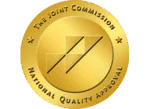Lean drink, often referred to as “purple drank,” “sizzurp,” or simply “lean,” is a concoction that has gained notoriety in popular culture, particularly in music and social media. Originating in the southern United States, lean drink is typically made by mixing prescription-strength cough syrup containing codeine and promethazine with a soft drink, usually soda, and sometimes a hard candy like Jolly Ranchers to enhance the flavor. The mixture’s distinct purple hue has become synonymous with its street name.
Codeine, an opioid, is the primary ingredient in lean that produces its euphoric effects, while promethazine, an antihistamine, adds to the drink’s soothing properties. Despite its reputation as a “party drug,” lean is far from harmless and poses significant risks to those who consume it.
If someone you love is struggling with opioid addiction, don’t wait for things to get worse. Call us today — help is available, and recovery is possible.
What are the Effects of Drinking Lean?
The effects of drinking lean can be both physically and mentally intoxicating, leading to a state of extreme relaxation, euphoria, and detachment from reality. Users often describe the sensation as a slow, calming wave that washes over them, which is why it’s named “lean”—the drink can make you feel like you need to lean on something to stay upright.
However, the allure of lean’s effects comes with a steep price. The most common effects of drinking lean include:
- Euphoria: The codeine in lean activates the brain’s reward system, leading to intense feelings of pleasure.
- Sedation: Promethazine enhances the sedative effects, making users feel drowsy and relaxed.
- Respiratory Depression: Both codeine and promethazine are known to slow down breathing, which can be dangerous, especially in high doses.
- Impaired Motor Skills: Lean can severely affect coordination and reaction times, increasing the risk of accidents.
- Cognitive Impairment: Regular use can lead to problems with memory, decision-making, and focus.
- Constipation: Opioids like codeine are notorious for causing gastrointestinal issues, including severe constipation.
Is Lean Dangerous to Drink?

Yes, lean is extremely dangerous, both in the short term and the long term. The casual perception of lean as a “cool” or “harmless” drink is a grave misconception. Lean’s dangers are rooted in its powerful ingredients—codeine and promethazine—which are potent prescription medications with serious side effects.
Lean contains codeine, an opioid, which is highly addictive. Regular consumption can quickly lead to physical dependence and addiction, requiring users to consume more to achieve the same effects, thus increasing the risk of overdosing.
One of the most significant dangers of lean is the risk of overdose. Because lean slows down the central nervous system, it can lead to respiratory failure, coma, and even death, especially when mixed with other depressants like alcohol.
Prolonged use of lean can lead to severe damage to vital organs, particularly the liver and kidneys. The high sugar content in the drink can also contribute to diabetes and other metabolic issues.
Chronic use of lean can exacerbate mental health problems, leading to depression, anxiety, and other mood disorders. The drug’s impact on cognitive function can also result in long-term brain damage.
Stopping lean after regular use can result in severe withdrawal symptoms, including nausea, vomiting, agitation, and intense cravings, making it difficult for users to quit without professional help.
How Can You Tell if a Loved One Is Drinking Lean?
Recognizing the signs that a loved one is drinking lean is crucial for early intervention. The symptoms of lean use may only sometimes be obvious, especially if the individual is trying to hide their consumption. However, there are some red flags to watch for:
- Behavioral Changes: Noticeable shifts in behavior, such as increased secrecy, social withdrawal, or mood swings, could indicate lean use.
- Physical Symptoms: Look for signs of drowsiness, slurred speech, an unsteady gait, or unexplained fatigue. Users may also have bloodshot eyes or exhibit unusual lethargy.
- Paraphernalia: Finding empty cough syrup bottles, soda cans, or candy wrappers may be an indication that someone is consuming lean.
- Financial Issues: Lean can be expensive, leading to unexplained financial problems or missing money.
- Decline in Responsibilities: A sudden drop in performance at work or school, missed obligations, or a general lack of interest in previously enjoyed activities could signal a problem.
- Health Problems: Frequent illness, unexplained weight changes, or frequent constipation could be related to lean use.
What is Drug-Specific Language for Lean Drink?

Understanding the drug-specific language used by those who consume lean can help in identifying its use. Users often refer to lean in coded terms or slang to conceal their behavior. Some of the common slang associated with lean includes:
- Lean: The most common term for the drink.
- Purple Drank: Refers to the drink’s color when mixed with purple cough syrup.
- Sizzurp: Another slang term for the drink.
- Texas Tea: A nickname that references its popularity in Southern states, particularly Texas.
- Dirty Sprite: Refers to the common practice of mixing prescription-strength cough syrup with Sprite.
- Barre: A term referring to a double Styrofoam cup used to drink lean, often seen as a status symbol in the culture surrounding lean.
- Actavis: A brand of cough syrup that was widely used before being discontinued, but still referenced in the culture.
- Robo: A term derived from Robitussin, a cough syrup brand that is not typically used to make lean.
- Thizzin: A term for the state of being high on lean.
- Pour Up: The act of preparing a lean drink, usually referring to pouring cough syrup into a soda.
These terms are often used within specific communities and subcultures, particularly in music, where lean drink has been glamorized. Understanding this language is crucial for recognizing and addressing potential substance use issues.
What is Robotripping?
Robottripping, although similar to lean in some ways, refers to the abuse of over-the-counter cough medicines that contain dextromethorphan (DXM) rather than codeine. DXM is a common ingredient in cough syrups and can produce dissociative and hallucinogenic effects when taken in large doses. The term “robotripping” comes from the brand name “Robitussin,” a popular cough syrup.
While robotripping may seem less dangerous because it involves over-the-counter medications, it is far from safe. High doses of DXM can lead to severe psychological effects, including hallucinations, paranoia, and extreme agitation. Additionally, robotripping can cause physical harm, including high blood pressure, seizures, and even death in extreme cases.
What Treatment Options are Available for Lean Drink?
Overcoming an addiction to lean requires professional treatment due to the potent nature of the drugs involved. Treatment typically involves a combination of medical detox, therapy, and support to address both the physical and psychological aspects of addiction. Here’s an overview of the treatment options:
The first step in treating lean addiction is detoxification, which involves gradually weaning the body off the drug while managing withdrawal symptoms. This process should be conducted under medical supervision to ensure safety.
For those who cannot commit to an inpatient program, outpatient treatment offers flexibility while still providing access to essential therapies and support. It allows individuals to receive treatment while maintaining their daily routines and responsibilities.
Cognitive behavioral therapy is a common therapeutic approach used in addiction treatment, including for lean drinking. It helps individuals identify and change negative thought patterns and behaviors that contribute to their substance use, promoting healthier coping mechanisms.
Many individuals struggling with lean addiction also face co-occurring mental health disorders such as anxiety, depression, or PTSD. Dual diagnosis treatment addresses both the addiction and the underlying mental health issues simultaneously, offering a comprehensive approach that reduces the risk of relapse and promotes overall well-being.
After intensive treatment for lean drinking addiction, transitioning into a sober living home offers a supportive, drug-free environment that helps individuals maintain sobriety. These homes provide a space to practice new sobriety skills, rebuild lives, and gradually reintegrate into society with the support of peers who are also on the path to recovery.
Group therapy is essential in recovering from lean drinking addiction, offering a supportive space to share experiences and challenges. It helps reduce isolation, fosters a sense of community, and encourages accountability, all of which are key to staying committed to recovery.
Long-term recovery requires ongoing support, even after formal treatment ends. Aftercare programs, including continued therapy and support group participation, are crucial in preventing relapse. These programs often involve regular check-ins, counseling sessions, and the development of coping strategies to manage triggers and stress.
Westwind Recovery® Offers Addiction Treatment in Los Angeles
 Lean drink may be glamorized in pop culture, but the reality is that it’s a dangerous and potentially deadly substance. Its effects may seem appealing initially, but the risks far outweigh any short-term pleasure. If you suspect that a loved one is drinking lean, it’s important to seek help as soon as possible. At Westwind Recovery® in Los Angeles, we offer comprehensive treatment programs to help individuals reclaim their lives. You can expect:
Lean drink may be glamorized in pop culture, but the reality is that it’s a dangerous and potentially deadly substance. Its effects may seem appealing initially, but the risks far outweigh any short-term pleasure. If you suspect that a loved one is drinking lean, it’s important to seek help as soon as possible. At Westwind Recovery® in Los Angeles, we offer comprehensive treatment programs to help individuals reclaim their lives. You can expect:
- A Holistic Approach
- Experienced Staff
- Individualized Care
- Addiction Treatment Resources
- Comprehensive Programs
Westwind Recovery® in Los Angeles offers the support and expertise needed to overcome addiction and build a healthier, drug-free future. Don’t wait until it’s too late—reach out to us for help today.

Dr. Deena is the Chief Clinical Officer of Westwind Recovery®, an award-winning outpatient treatment center in Los Angeles where she oversees the clinical and administrative program and treatment methods. Dr. Deena is a doctor of psychology and licensed clinical social worker since 1993. LCSW #20628. Originally from the East Coast, Dr. Deena has worked running treatment centers, worked as a therapist in psychiatric hospitals as well as school settings and currently has a thriving private practice in the LA area. Dr. Deena has appeared regularly on the Dr. Phil Show as an expert since 2003. She has also been featured on many other TV shows, podcasts and has contributed to written publications as well as podcasts.




